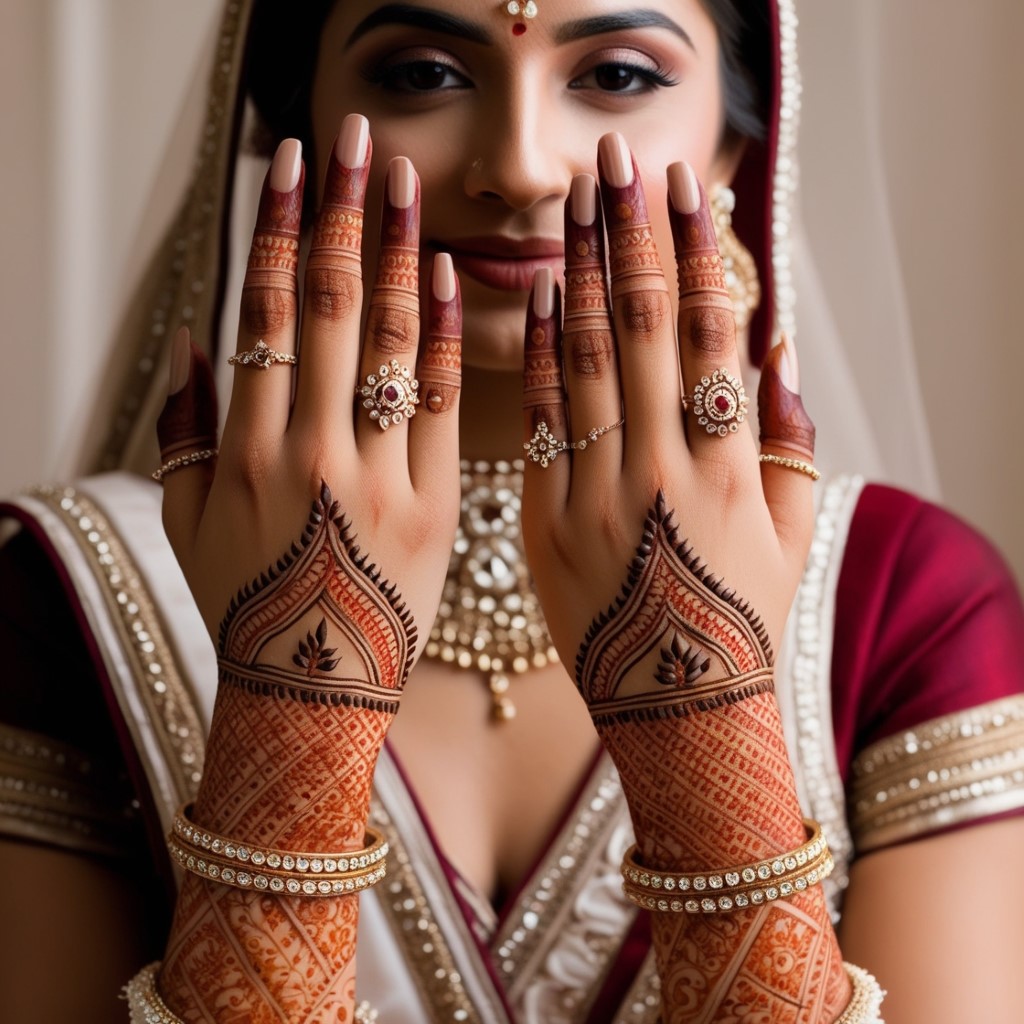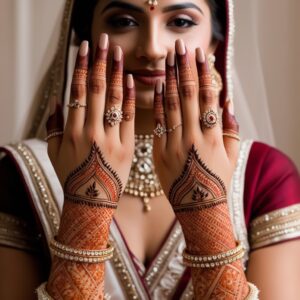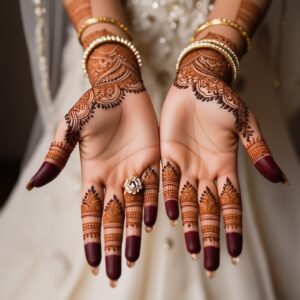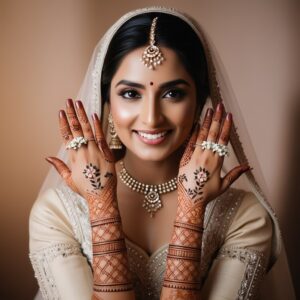Indian Bridal Mehndi Designs: Tradition vs. Modern Interpretation
It started as a typical Mehndi ceremony—music filled the air, the sweet smell of henna lingered, and the bride, Neha, sat with her hands extended, as the artist carefully drew intricate patterns on her skin. Surrounded by close friends and family, laughter and light conversation floated through the room. But what began as a joyful celebration quickly turned into something more thought-provoking when Neha posed a question that caught everyone off guard.
“Do you think Mehndi should always follow tradition, or is it okay to add something personal, even if it changes the design?”
Her question hung in the air for a moment, sparking a debate none of us had expected. Suddenly, the room became divided—those who valued the deep-rooted traditions of Indian bridal Mehndi designs and those who believed in the freedom to make the art form more personal, more modern.
The Traditionalist Argument
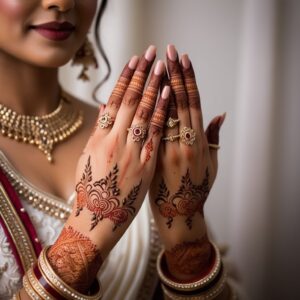
“It’s not just about how it looks,” Anjali, Neha’s aunt, began, her tone filled with conviction. “These designs have meaning. They’ve been passed down for generations. Paisleys, florals, mandalas—they symbolize fertility, love, and prosperity. When you change that, you lose the connection to our roots.”
Anjali’s words echoed a sentiment that felt timeless. Mehndi, for many, is more than decoration—it’s a living tradition. Each design, each delicate swirl and curve, is a reflection of centuries of culture, tying the bride to a history much larger than herself.
I couldn’t help but nod in agreement. There’s something undeniably powerful in continuity—knowing that the same patterns applied to brides hundreds of years ago are still celebrated today. It’s like a sculptor continuing the legacy of the masters, ensuring that the essence of the craft remains unbroken through time.
The Modern Perspective
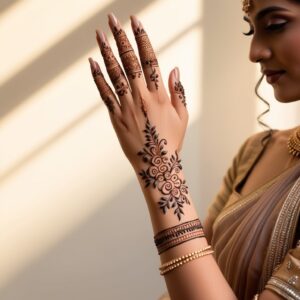
“But isn’t art meant to evolve?” Priya, Neha’s best friend, countered, her tone light but firm. “Look at brides now—they’re incorporating personal touches, like symbols that matter to them, or even their initials. Doesn’t that make it more meaningful? It’s still Mehndi, but it’s uniquely theirs.”
Her words stirred a new dimension to the debate. Priya wasn’t wrong. I’d seen this myself at various weddings—where traditional floral patterns were interrupted by small, modern elements that made the Mehndi deeply personal. A hidden date, a significant word, or even a minimalist approach that reflected the bride’s modern taste.
“It’s still rooted in tradition,” Priya continued, her confidence building. “But just like any art, it’s allowed to grow. We don’t live the same lives our ancestors did—so why should our Mehndi be exactly the same?”
Her point resonated with me. As an artist, I’ve always believed in the evolution of art. Even in sculpture, tradition is the foundation, but modern artists bring their own experiences, exploring new forms and ideas. Why wouldn’t Mehndi, an art form steeped in tradition, also allow room for personal interpretation?
The Bride’s Dilemma
Neha sat between them, quiet, her eyes on the Mehndi drying on her hands. She traced the delicate patterns with her fingers, perhaps searching for an answer in the intricate lines.
“I think,” she said softly, “that both sides are important. The traditional designs make me feel connected to something bigger, like I’m part of a long line of women who’ve been through this. But at the same time, I want my Mehndi to reflect who I am today.”
Her words struck me. As an artist, I’ve always believed that art should honor tradition while also being a reflection of the present. Neha, like many modern brides, was searching for that balance—honoring the past while making room for her own story.
The Art of Balance
As the conversation deepened, I couldn’t help but think about how Indian bridal Mehndi designs represent a balance between tradition and innovation. They are, at their core, an artistic expression of continuity—between the past and the present, between what was and what will be.
Anjali wasn’t wrong. There’s undeniable beauty in preserving traditional designs. They serve as a link to history, a visual reminder of the culture and values that have been passed down through generations. But Priya’s argument held weight too. Art evolves, and each bride should feel free to make Mehndi her own, infusing it with personal meaning.
I’ve seen this evolution firsthand. At some weddings, the Mehndi is a seamless blend of old and new—a bride’s way of saying, “I respect where I come from, but I also know who I am today.” Much like a sculptor leaves their unique mark on a timeless craft, a bride’s Mehndi tells her individual story, even as it honors the stories of those who came before her.
The Resolution
By the end of the ceremony, Neha’s Mehndi was complete. The design was intricate and traditional, filled with the delicate florals and paisleys of her ancestors. But if you looked closely, you’d spot subtle modern touches—a heart here, her wedding date hidden within the vines, even a symbol of the ocean, a nod to her love of the sea.
“I think I’ve found the balance,” she said, her voice full of quiet satisfaction as she admired her hands. “It’s both tradition and me.”
In that moment, it was clear to me that Indian bridal Mehndi is more than just a tradition or a personal expression—it’s a conversation. A conversation between generations, between the past and the present. And much like the debate we had that day, it’s this dialogue that keeps the art form alive, evolving, and meaningful.
Tradition Meets Innovation
In the end, the debate surrounding Indian bridal Mehndi designs is not about choosing one over the other—it’s about finding balance. Mehndi, like any form of art, thrives when it honors its roots while embracing the personal stories and innovations of the present. Every bride, like Neha, is part of that ongoing conversation, using Mehndi not just to reflect tradition but to express who she is today.
Suggested posts to keep exploring Mehndi designs:
- Pakistani Bridal Mehndi Designs – Discover how Pakistani brides blend tradition and modern elements in their Mehndi.
- Back Hand Round Mehndi Design – Explore the timeless beauty and cultural significance of round Mehndi patterns.
